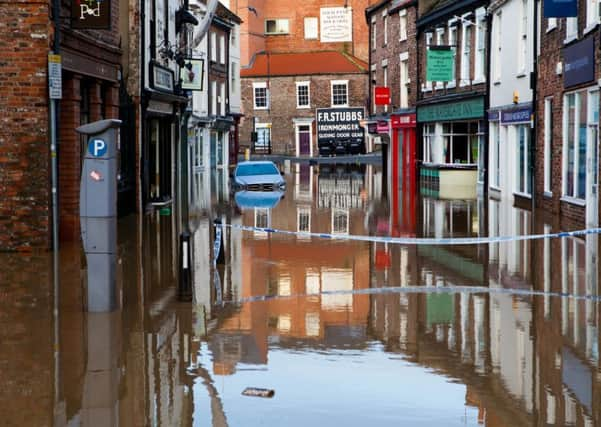YP Letters: There's no cheap and easy solution to flood woes of cities like York


IT would serve the interests of those victims of the recent flooding if the Environment Agency bureaucrats provided factual information rather than silly excuses, and propaganda that suggests the problems can be solved simply and easily.
I refer to a recent statement on television by an EA spokesman that the flood defences had not failed, because the water came over the top of them, and that water supply reservoirs in the Calder Valley can be used to prevent flooding.
Advertisement
Hide AdAdvertisement
Hide AdThe truth is that to protect properties from the kind of rainfall and river flow events we have just encountered will involve massive, innovative, and expensive civil engineering works.
Cities like York and Carlisle are on flood plains, with rivers fed from mountainous areas with high rainfalls. Rainfall can be extremely intense, and highly localised, with the results we have just seen. To protect these areas would involve, in the case of York, the construction of a flood relief channel from upstream of the city into the Humber estuary, and in Carlisle a similar undertaking from the River Eden into the Solway estuary. The cost would be in the hundreds of millions. There would be some benefits. The channels could be maintained partially filled, and provide amenities such as fishing and boating.
To protect some parts of the Calder Valley, it might mean the construction of new balancing reservoirs, with flood relief tunnels around or under towns.
To understand why this is the case it might help to understand a little about rainfall, river flows, and the design of drainage schemes. In designing drainage for a new development such as an industrial estate, the engineer would study rainfall information for that area, and decide what degree of protection from flooding was required.
Advertisement
Hide AdAdvertisement
Hide AdHe would look at maximum rainfall for the area, and from the information would estimate the flow from rainfall events which might occur once every fifty or a hundred years. This would be done by extrapolation or estimation from existing data, as actual rainfall records would not generally be available.
The size of the drainage pipes would then be calculated, and these would be well in excess of what would be required for “normal” rainfall. The extra cost of these larger pipes would not be a significant cost for the whole scheme.
Our Victorian ancestors build sewerage systems well over the capacity needed at the time, which has been of great value to present day populations.